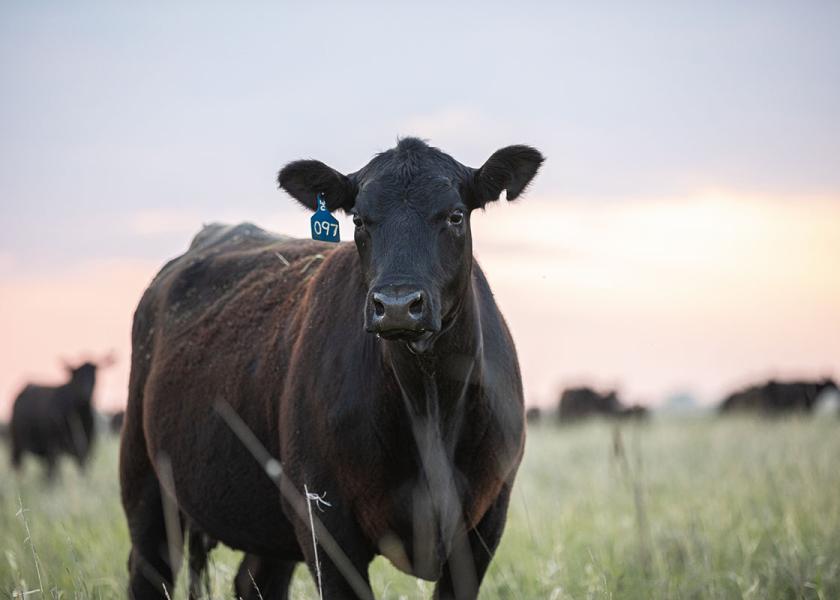Sexten: Risks to Making Progress

If you are risk averse—the cattle business may not be for you. It’s a business full of environmental, production and marketing challenges.
Year-round environmental risks exist regardless of your location. Drought can cause untimely marketing or increased input cost due to feed scarcity. An untimely winter storm can ruin a calving season if you’re successful enough to dodge a summer heat stress event capable of rendering bulls sterile or heifers aborting short term pregnancies.
The odds of a perfect breeding season are slim, making the odds of a perfect calving season even less likely. Even after an unassisted birth, a calf is seven months from a successful marketing window. Whatever your weaning weight goal, open cows and calf losses make a tremendous impact on the average.
Commercial cow-calf operations who sort, wean and market in the same week endure the greatest risk associated with market timing. This summer brought plenty of debate whether forward-selling calves was the best marketing plan, many suggesting early marketing was forgoing bigger profits going into autumn. Recent market declines highlight the market’s ability to change quickly in direction and magnitude.
These risks are not completely unmanageable and often we decide what is the lesser evil. Your calving season is a choice initiated by the day bulls are turned out, effectively establishing the seasonal risks the operation will endure during breeding, calving and marketing. After picking a calving season, sire selection becomes the next risk-management tool. Genetic testing and expected progeny differences (EPDs) have helped allow the beef industry to make significant progress on mitigating calving difficulty risks while maintaining or increasing growth potential.
Crossbreeding remains a reproductive risk mitigation tool many commercial operations have forgone to minimize marketing risk. One should continually evaluate the reproduction and production tradeoffs for this marketing decision. Historic variation associated with crossbreeding is increasingly manageable due to fewer physical breed differences not to mention the ability to enhance uniformity across breeds with genomic testing options.
Few realize the reproductive risk management tools available to the commercial beef operation from seedstock suppliers, breed associations and genomic testing providers. The tools and accuracy for selecting fertile and reproductively efficient females far exceeds the historic method of selecting the oldest and biggest sort of heifer calves. Today, we can determine the odds heifers will remain in the herd before we even turn out the bulls.
Selecting the oldest and fastest growing heifer calves has the potential to directly increase our reproductive risk by indirectly increasing the mature size and feed needs of the cow herd. Big cows increase costs while reducing the ranch per head carrying capacity. By using genetic selection tools on replacement females, producers can put selection pressure against mature size while selecting for reproductively efficient females that retain growth potential.
In a recent review[1] Troy Rowan, University of Tennessee Institute of Agriculture, cited a female missing one calf during her 11-year productive life has a 50:50 shot of being profitable. If we miss getting those expensive replacements rebred, the odds of profitability the rest of her life becomes a coin flip. Make the mistake of not culling a female who misses one calf, and the second offense drops the odds of profitability to 25%.
To manage cow herd production risk, each female retained should be viewed as an independent business decision. Do I want to maintain or grow the operation and is this the right employee to accomplish that goal, should be asked of every female retained.
If you’re buying bred heifers and depreciate $2,000 for five years, the year one interest cost on the purchase price alone is comparable to implementing a genetic test to determine productive risks. For raised females, the genetic risk assessment cost is comparable to the pre-conditioning program cost. Assessing genetic potential and future reproductive risk early in life helps provide greater marketing optionality of high-risk females.
Feed efficiency is another contributing factor to high-risk females as there are few, if any, visual indicators of feed-efficient females. Sure, we can say the big bodied, wide sprung, deep flanked cows are easy keepers, but we can’t actually determine how they maintain condition compared to other females. Are those cows easy keeping because they produce less, eat more or both? We know low milk producing cows have lesser feed requirements compared to more productive counterparts, but how is feed intake, potential milk production and mature size determined when looking at a 500 lb freshly weaned heifer calf, or even a P3 bred heifer for that matter?
The paradox of selection occurs where we are told to focus genetic improvement via sire selection, yet those same market-focused, growth-oriented sires have the potential to increase cow herd costs. Add in a visual selection system based on keeping the oldest, largest and fastest growing replacements and reproduction risk will likely increase. The cattle business requires plenty of risk tolerance; using genetic testing tools provides cow-calf operations one opportunity to help shift risk away from your replacement heifer enterprise while building an efficient cow herd.
[1] Troy N. Rowan, Invited Review: Genetic decision tools for increasing cow efficiency and sustainability in forage based beef systems, Applied Animal Science, Volume 38, Issue 6, 2022, Pages 660-670, ISSN 2590-2865,







